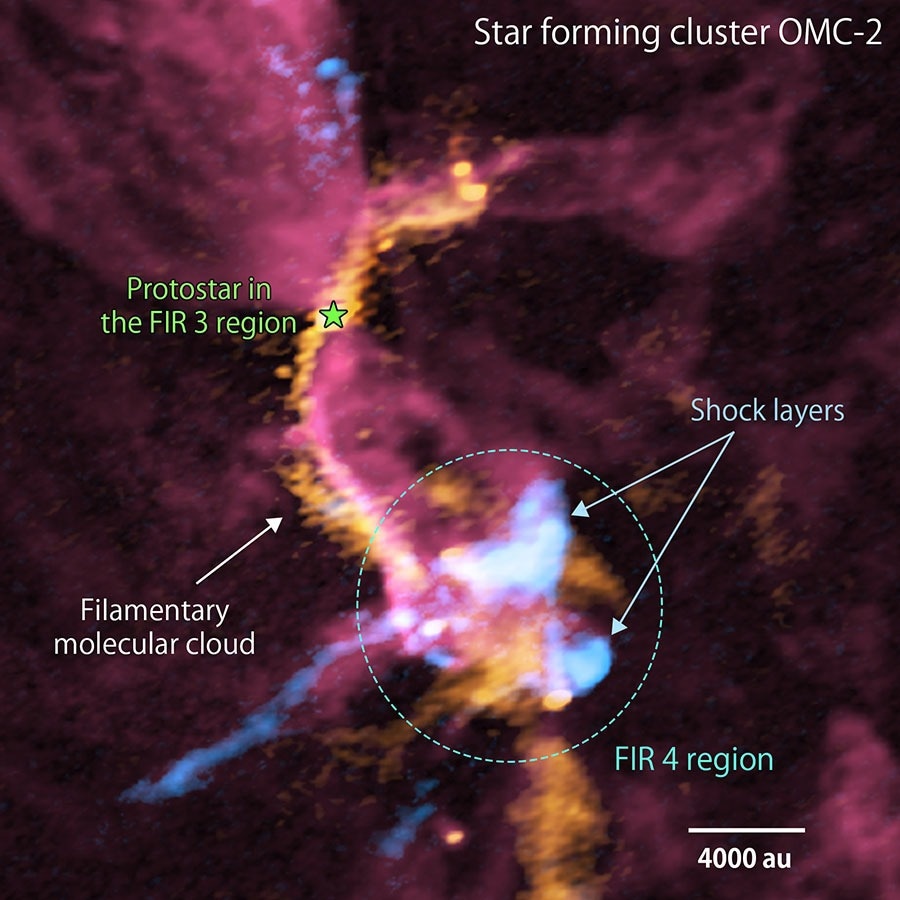According to recent studies, a baby star’s outflow of fast-moving gas is clashing with another star-forming cloud of dense gas nearby.

Composite image of the regions FIR 3 and FIR 4 in OMC-2 (Orion Molecular Cloud 2) made from ALMA data (red: carbon monoxide gas, orange: thermal dust, blue: silicon monoxide gas). Whitish colors indicate more intense radio signals. The green star marks the location of the protostar in the FIR 3 region. The image shows shock layers around the FIR 4 region as well as a filamentary molecular cloud outflow from the protostar. Image Credit: ALMA (ESO/NAOJ/NRAO), A. Sato et al.
These findings unequivocally demonstrate how the outflow from a baby star influences a cloud that is generating nearby stars.
A gas and dust cloud collapse to generate stars. However, part of the material is expelled as a fast outflow since not all of it can be integrated into the new star. It has been hypothesized that sometimes an outflow will collide with another cloud and affect star formation, as most stars are born in big clusters.
This prediction, however, was unable to be verified since star-forming clusters are difficult to image in detail and are located far away from Earth.
Asako Sato, a graduate student at Kyushu University, led a team that successfully resolved the distributions of gas and dust in a cluster-forming region located 1400 light-years away in the constellation Orion by utilizing the unique potential of the radio telescope ALMA (Atacama Large Millimeter/submillimeter Array).
According to the team’s findings, an outflow from a baby star in the FIR 3 area is influencing the FIR 4 region, where a slew of young stars are forming inside the same cluster and generating shock layers.
Now, the team is preparing to use ALMA for more research to determine if this competition between the stellar siblings has a beneficial or detrimental effect on star formation.
Journal Reference
Sato, A., et al. (2023) ALMA Fragmented Source Catalogue in Orion (FraSCO) I. Outflow interaction within an embedded cluster in OMC-2/FIR3, FIR4, and FIR5. The Astrophysical Journal. doi:10.48550/arXiv.2211.12140.